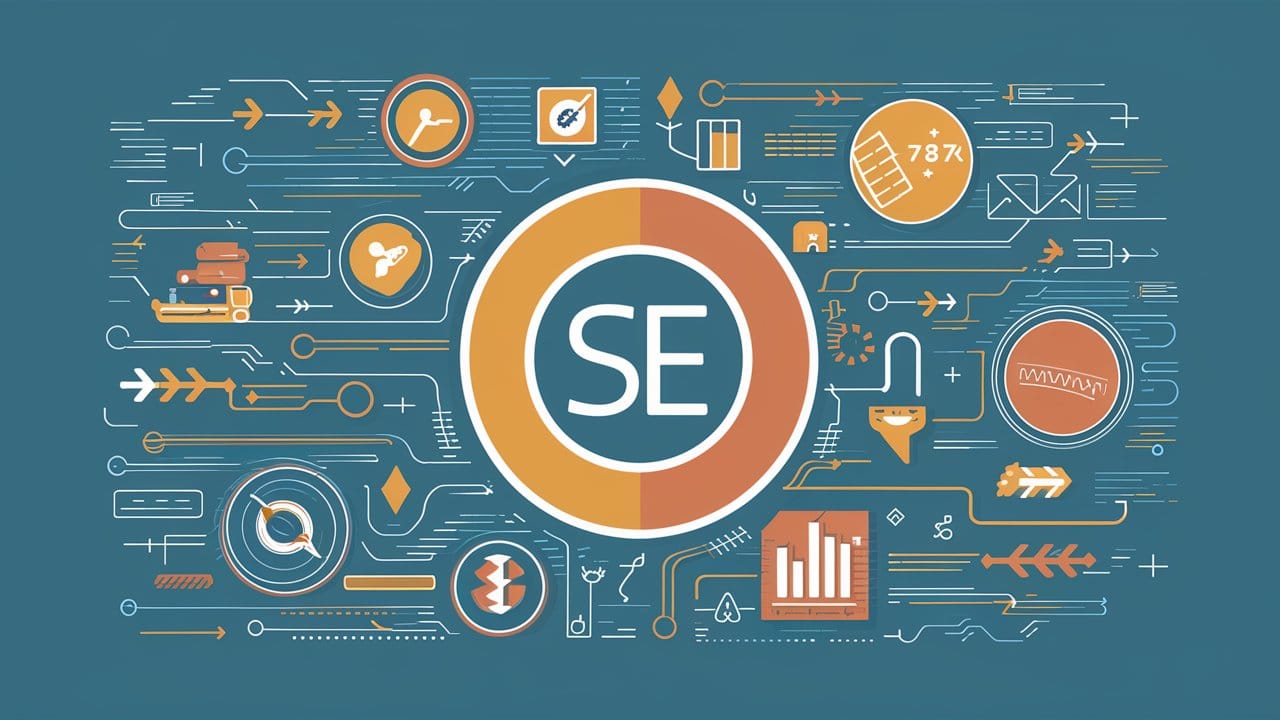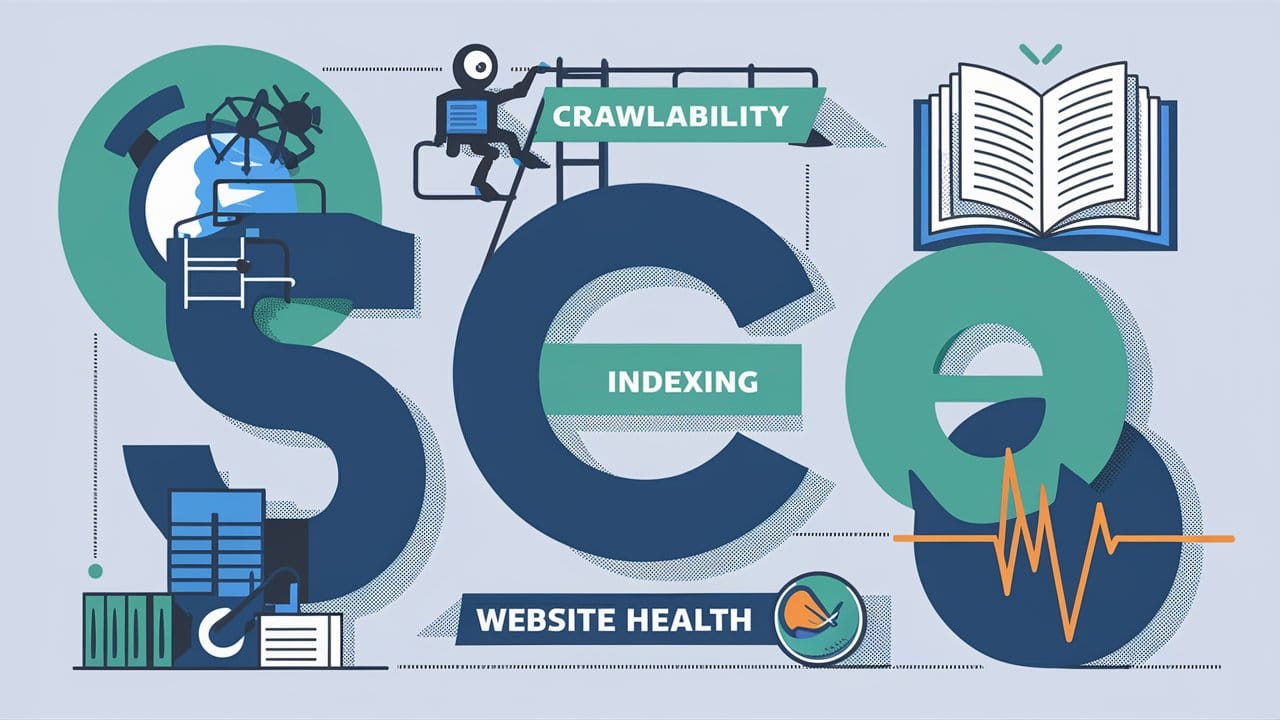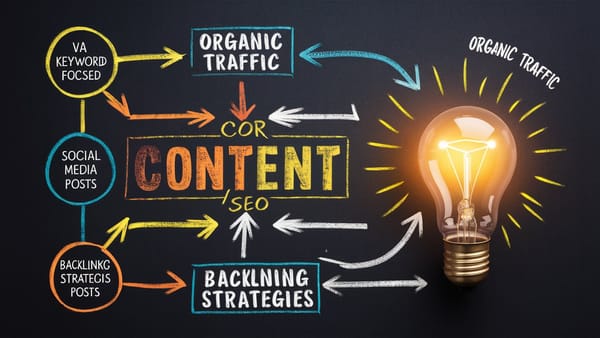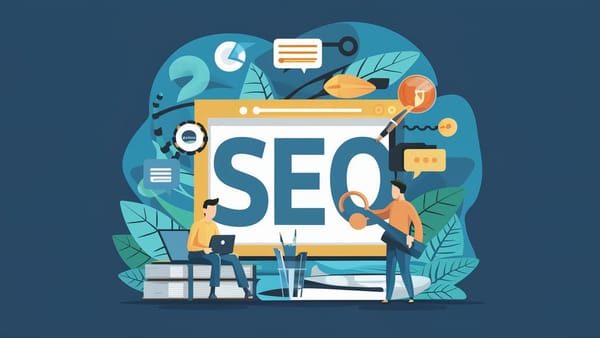Technical SEO Essentials: Crawlability, Indexing, and Website Health
Dive into the core of Technical SEO Essentials, focusing on crawlability, indexing, and website health. Uncover vital strategies to ensure your website is easily navigated by search engines, maximizing its visibility and performance in the digital realm

Introduction to Technical SEO
In the digital age, where the internet has become the cornerstone of accessing information, the importance of Technical SEO cannot be overstated. As we delve into the nuances of optimizing websites, it's essential to understand that Technical SEO is the foundation upon which the visibility of any online content is built. It involves a series of intricate processes designed to improve a website's structure, making it easier for search engines to crawl, index, and ultimately present the site in search results. My journey into mastering Technical SEO has taught me that while the concept might seem daunting at first, its execution can significantly enhance the performance and user experience of a website.
Technical SEO is more than just a checklist. It's an ongoing strategy that involves constant monitoring, tweaking, and understanding the ever-evolving algorithms of search engines. The primary goal is to ensure that your website is accessible, indexable, and technically sound to not only rank well but also provide value to your audience. Throughout this article, I'll share insights from my experience, breaking down complex concepts into understandable segments, starting with the basics of crawlability and indexing, moving through to website health, and covering best practices along the way.
Understanding the intricacies of Technical SEO has been a transformative journey for me. It's a field that requires patience, curiosity, and a willingness to learn. I've discovered that the more you know about how search engines work and what they value, the better equipped you are to make informed decisions about your website's SEO strategy. Now, let's explore the critical components of Technical SEO, starting with crawlability.

Understanding Crawlability
Crawlability refers to a search engine's ability to access and crawl through a website's content. Imagine search engines as librarians, and websites as books. If a book is not properly indexed or hard to find, it's unlikely to be recommended. Similarly, if a website is not easily crawlable, its chances of appearing in search results diminish significantly. Crawlability is the first step in ensuring your website is visible to your target audience.
Several factors can affect a website's crawlability. These include the structure of your website, the presence of a robots.txt file, and how you manage your sitemap. A well-organized website with a logical hierarchy facilitates easier navigation not just for users but also for search engine bots. The robots.txt file is like a guide for these bots, indicating which pages should or should not be crawled. Lastly, a sitemap acts as a directory, aiding search engines in discovering all the pages on your site.
Overcoming crawlability issues often involves a meticulous review of your website's architecture. Ensuring that content is not buried deep within the site, optimizing the use of JavaScript and ensuring it doesn't hinder the crawling process, and regularly updating your sitemap are crucial steps. My journey has taught me that maintaining an easily navigable website benefits both users and search engines, paving the way for better visibility and reach.
Importance of Indexing
Once a website is crawlable, the next step in the SEO journey is ensuring it can be indexed. Indexing is the process by which search engines organize information before a search to enable fast responses to queries. If crawlability is about access, indexing is about understanding and storing the information. A website that is not indexed is invisible to search engine users, no matter how valuable its content may be.
The process of indexing involves analyzing the content of a website and storing it in a way that allows for efficient retrieval. This is where the use of keywords, meta tags, and content relevance comes into play. Search engines strive to present the most relevant results to users, and indexing is the process that enables this precision. Ensuring your website is properly indexed involves optimizing content for relevance, using accurate tags, and avoiding duplicate content, which can confuse search engines and dilute your website's visibility.
One aspect of my Technical SEO journey that has been particularly enlightening is understanding the dynamic nature of indexing. Search engines are continually updating their algorithms and the criteria for indexing. This means that what works today might not be as effective tomorrow. Staying informed about the latest SEO trends and algorithm updates is crucial for maintaining the visibility and relevance of your website.
Factors Affecting Website Health
Website health is a comprehensive term that encompasses various factors, including but not limited to, site speed, mobile-friendliness, security, and user experience. A healthy website not only ranks better in search results but also provides a more enjoyable and secure experience for its users. In my experience, neglecting website health can lead to a gradual decline in site performance, user engagement, and ultimately, conversions.
Site speed is a critical component of website health. In an age of instant gratification, users expect web pages to load quickly. Slow-loading pages can increase bounce rates and discourage users from engaging with your content. Additionally, search engines like Google have made site speed a ranking factor, further emphasizing its importance.
Mobile-friendliness is another crucial aspect of website health. With the majority of internet users accessing the web via mobile devices, having a website that is optimized for mobile is no longer optional. A mobile-friendly website not only provides a better user experience but also ranks higher in mobile search results.
Security is a factor that cannot be overlooked when discussing website health. Ensuring your website is secure, primarily through the implementation of HTTPS, protects your users' information and enhances their trust in your site. Search engines also prioritize secure websites in their rankings, making website security a dual-purpose endeavor that benefits both users and website owners.

Common Technical SEO Issues and Solutions
Throughout my journey in optimizing websites, I have encountered a myriad of Technical SEO issues. These range from simple fixes to complex problems that require a deep understanding of how websites and search engines interact. Some of the most common issues include broken links, duplicate content, unoptimized images, and poor mobile optimization.
Broken links, for instance, can significantly hinder a website's usability and search engine ranking. They lead to a poor user experience and can prevent search engines from properly indexing your site. The solution involves regularly auditing your website for broken links and either fixing or removing them. Tools like Screaming Frog SEO Spider and Google Search Console can be invaluable in this process.
Duplicate content poses a challenge by diluting your website's relevance and potentially leading to penalties from search engines. Ensuring that each page on your site has unique, valuable content is crucial. In cases where duplicate content cannot be avoided, implementing canonical tags can help indicate to search engines which version of the content is the primary one.
Unoptimized images can slow down your site, affecting load times and user experience. Compressing images and using appropriate file formats can significantly improve site speed without compromising on quality. Mobile optimization issues can be addressed by adopting responsive design, which ensures that your website looks and performs well across all devices.
Tools to Monitor Crawlability, Indexing, and Website Health
Monitoring the technical aspects of SEO is an ongoing process that requires the right tools. Fortunately, there are numerous resources available that can help identify issues and track the performance of your website. Google Search Console is a fundamental tool that provides insights into how Google views your site. It allows you to see which pages are indexed, identify crawl errors, and understand how your site appears in search results.
Screaming Frog SEO Spider is another essential tool in any Technical SEO toolkit. It simulates how search engines crawl your site, identifying broken links, duplicate content, and other issues that could affect your website's performance. Additionally, tools like GTmetrix and PageSpeed Insights by Google offer detailed analyses of your website's loading speed, providing actionable recommendations for improvement.
Investing time in learning how to effectively use these tools can provide a significant advantage in maintaining the health and visibility of your website. By regularly monitoring and addressing the issues these tools highlight, you can ensure that your site remains competitive in search engine rankings and provides a positive user experience.
Best Practices for Technical SEO
Over the years, I've learned that adhering to best practices in Technical SEO is not just about following a set of rules. It's about understanding the principles behind these practices and how they contribute to the overall success of your website. Some of the key best practices include ensuring your website is well-structured, using HTTPS for security, optimizing your site for mobile devices, and regularly creating and updating high-quality content.
A well-structured website facilitates easier navigation for both users and search engine bots. This can be achieved through a logical hierarchy in your site's architecture, using breadcrumb navigation, and implementing an XML sitemap. Security, as mentioned earlier, is also critical. Migrating your site to HTTPS not only protects your users but also contributes to higher search engine rankings.
Optimizing for mobile devices is no longer optional. With the advent of mobile-first indexing, search engines now predominantly use the mobile version of content for indexing and ranking. Thus, ensuring your website provides a seamless experience on mobile is imperative. Lastly, the importance of high-quality content cannot be understated. Regularly updating your site with valuable, relevant content keeps users engaged and signals to search engines that your site is active and authoritative.

Optimizing Website Speed for Better Crawlability and Indexing
Website speed optimization is a critical aspect of Technical SEO that directly impacts crawlability and indexing. A faster website not only provides a better user experience but also facilitates easier and more efficient crawling by search engine bots. This is because search engines allocate a crawl budget to each website, and faster-loading pages consume less of this budget, allowing more content to be crawled and indexed.
Several techniques can be employed to improve website speed. These include optimizing images, leveraging browser caching, minimizing HTTP requests by combining files where possible, and using content delivery networks (CDNs) to reduce latency. Additionally, minimizing the use of heavy scripts and optimizing CSS delivery can also contribute to faster loading times.
Implementing these speed optimization techniques requires a careful balance between functionality and performance. It's essential to regularly test your website's speed using tools like Google's PageSpeed Insights and make adjustments as needed. A faster website not only improves your technical SEO but also enhances the overall experience for your visitors, leading to better engagement and conversion rates.
Importance of Mobile Optimization in Technical SEO
The shift towards mobile-first indexing by search engines underscores the importance of mobile optimization in Technical SEO. A mobile-optimized website is not just about resizing content to fit smaller screens. It involves designing your site in a way that provides an optimal experience on mobile devices, including fast loading times, easy navigation, and accessible content.
Mobile optimization also extends to ensuring that all your website's features are fully functional on mobile devices. This includes forms, buttons, and other interactive elements that might not translate well from desktop to mobile. Additionally, considering the user's mobile experience in terms of readability and engagement can further enhance the effectiveness of your mobile site.
The benefits of mobile optimization are clear. Not only does it improve your site's usability and user satisfaction, but it also positively affects your search engine rankings. With more users accessing the internet via mobile devices than ever before, ignoring mobile optimization is simply not an option for websites aiming to succeed in today's digital landscape.
Conclusion
The journey through the essentials of Technical SEO—from understanding crawlability and indexing to optimizing website health—highlights the intricate and dynamic nature of search engine optimization. Technical SEO is not a one-time task but an ongoing strategy that requires attention, adaptation, and continuous learning. By focusing on the key components discussed in this article, website owners and SEO professionals can significantly improve their site's performance, user experience, and search engine rankings.
Remember, the goal of Technical SEO is to make your website accessible, understandable, and valuable to both search engines and users. It's about creating a solid foundation that supports your content, enhances your visibility, and drives your online success. As we've explored the essentials of Technical SEO, it's clear that a proactive, informed approach is crucial.
Embracing the best practices, utilizing the right tools, and staying updated on the latest trends and algorithm updates can make a significant difference in your SEO efforts. Whether you're just starting on your Technical SEO journey or looking to refine your strategy, the insights and strategies shared here can serve as a guide to enhancing your website's crawlability, indexing, and overall health.
As we conclude this exploration of Technical SEO essentials, I encourage you to take these learnings and apply them to your website. Remember, the digital landscape is ever-evolving, and staying ahead requires constant vigilance, adaptation, and a commitment to excellence. Here's to your success in optimizing your website for better crawlability, indexing, and health.




